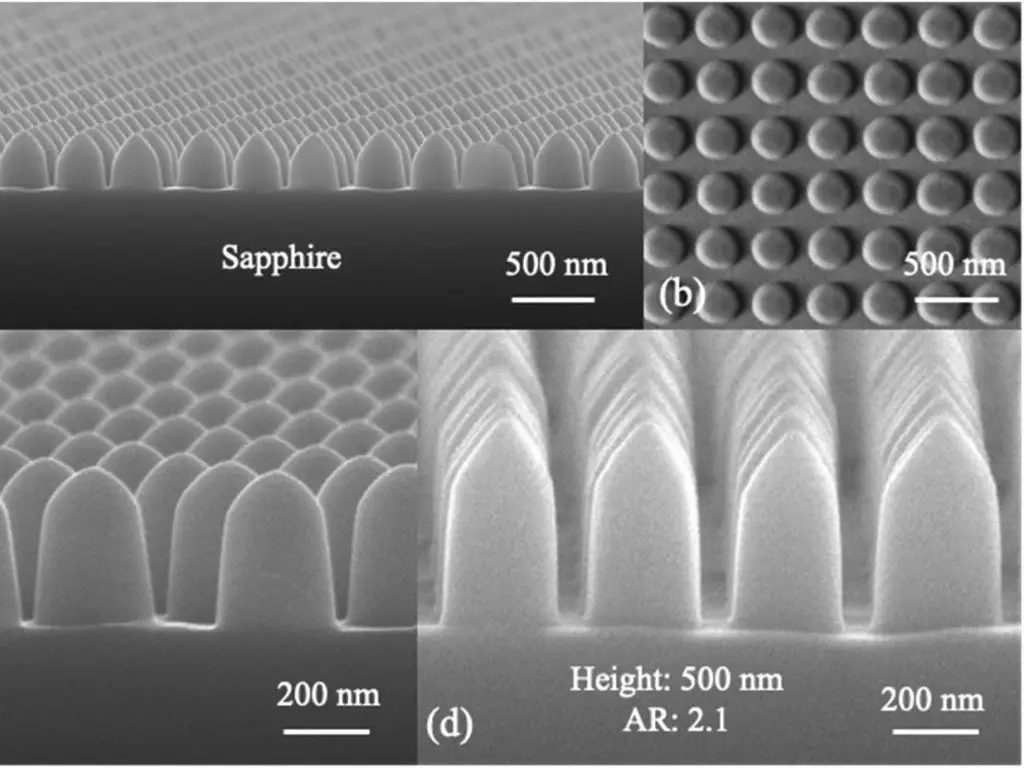A research team at The University of Texas at Austin recently successfully developed a novel “Super Sapphire” nanostructure. This technology not only possesses dust-proof, anti-glare, and anti-fog properties but also maintains the inherent durability of sapphire. This groundbreaking innovation, inspired by nature, is expected to be applied in fields such as electronics, optics, aerospace, and defense, and is moving towards real-world applications.
Table of Contents
Sapphire’s Superpowers
Imagine a phone screen that remains intact even after multiple drops, glasses that eliminate annoying glare, and a car windshield that no longer accumulates dust. With the advent of the new sapphire nanostructure, these visions will soon become reality.
Traditionally, sapphire has been prized for its exceptional hardness, making it virtually scratch-proof and highly favored in high-performance applications. However, its production difficulty has limited its application in the microscopic realm. “Sapphire is a high-value material because it has extremely high hardness and other excellent properties, but these properties also make it very challenging to produce on a small scale,” said Chih-Hao Chang, an associate professor in the Walker Department of Mechanical Engineering at UT Austin and the lead scientist on the research.

Record-Breaking Nanostructure
The research published by Professor Chang’s team in the journal Materials Horizons shows that through a new nanostructuring technique, they successfully created sapphire nanostructures with extremely high aspect ratios, allowing them to maintain both rigidity and hardness while possessing extraordinary functionality.
Although the scratch resistance of these nanostructures is slightly lower than that of traditional bulk sapphire, their scratch resistance is comparable to that of tungsten or conventional glass. However, the technology exhibits excellent anti-fog, dust-proof, and anti-glare capabilities and possesses self-cleaning properties.
“This technology is exciting because nanostructures are often considered fragile, but we’ve overcome that with sapphire,” said Kun-Chieh Chien, a recent PhD graduate and one of the lead authors of the study.

Bio-Inspired Design and Self-Cleaning Properties
The research team drew inspiration from nature. The tapered contours of the sapphire nanostructure mimic the design of moth eyes, thereby increasing light transmittance and reducing glare. Additionally, the structure’s high surface energy and aspect ratio allow it to form a superhydrophilic surface that prevents fog condensation. The technology can also be adjusted to create a superhydrophobic surface, allowing water droplets to slide off quickly, similar to the lotus leaf effect.
“Our sapphire nanostructures are not only multifunctional but also possess excellent mechanical strength, making them ideal for applications requiring high durability and performance,” said Mehmet Kepenekci, a graduate student and one of the lead authors.
Wide Applications and Future Development
This technology will bring numerous practical benefits. For consumers, it will improve the readability of smartphones in bright light, prevent camera lenses from fogging and glaring, and keep windows and windshields clean.
In the field of space exploration, the dust-proof performance of the technology can ensure that equipment is protected from dust during landing missions on other planets. In defense applications, it has the potential to be used in the manufacture of more powerful infrared sensors and protective windows.
“Our self-cleaning sapphire surface can maintain 98.7% dust-free area with just gravity,” said Andrew Tunell, a student who worked on the dust adhesion experiments. “This is a significant improvement over existing dust removal techniques, especially suitable for space environments where water resources are limited for cleaning.”
The research team is currently actively scaling up manufacturing and continuously improving the mechanical and chemical properties of the nanostructures to enhance their functionality. They hope that this technology will bring revolutionary changes to the real world.
Reference
- “Super Sapphire” Nanostructure “Dust-Proof, Anti-Glare, Anti-Fog,” Expected to Revolutionize Multiple Fields
- Scientists Develop “Super Sapphire” That Resists Scratches, Glare, Fog, and More
- Kun-Chieh Chien, Mehmet Kepenekci, …Chih-Hao Chang (2025). Scratch-resistant sapphire nanostructures with anti-glare, anti-fogging, and anti-dust properties, Materials Horizons, issue 6.
(Image source: University of Texas at Austin)
We offer customized adjustments to the grinding process, tailored to meet processing requirements for maximum efficiency.
Feel free to contact us and we will have specialist available to answer your questions.
If you need customized quotations, you’re also welcome to contact us.
Customer Service Hours: Monday to Friday 09:00~18:00 (GMT+8)
Phone: +8867 223 1058
If you have a subject that you want to know or a phone call that is not clear, you are welcome to send a private message to Facebook~~
Honway Facebook: https://www.facebook.com/honwaygroup
You may be interested in…
[wpb-random-posts]
